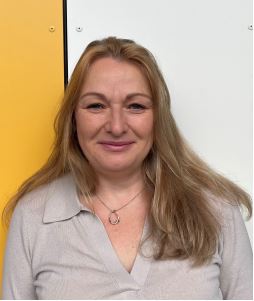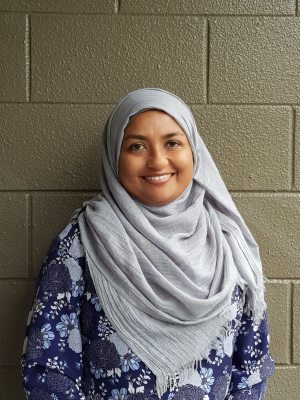Meet the Teacher: 6 Questions for Rachel Lamb
Meet the Teacher interviews spotlight teachers from all curriculum areas and levels who work toward supporting multilingual language learners. In this first interview, I chat with Rachel Lamb, a chemistry teacher from Auckland, New Zealand.
Rachel, who describes herself as a Welsh migrant to New Zealand, is also the refugee coordinator in her school, who supports the integration and needs of former refugee students. Because she had no previous background in language teaching, she wanted to learn how to best support the students she was responsible for and is currently undertaking a postgraduate qualification in teaching multilingual learners.

What are your priorities in teaching students who are new to learning English, and perhaps new to the country?
My greatest priority is making sure the students feel safe and secure as well as suitably equipped to begin their learning journey. In my opinion, successful learning cannot take place unless the students and, by association, their families feel secure.
How do you centre the voices and experiences of your multilingual students?
I teach a very multicultural class of 19 students whose ages range from 13–18. The students, who are all new to learning English, are very keen and enthusiastic to learn. I use their own languages and experiences to introduce new topics and vocabulary. As an example: We recently studied energy resources, and I enquired what forms of energy they used in their own countries of origin and compared that with New Zealand. This has since led on to discussions around renewable/nonrenewable sources and the implications.
In what ways does your classroom environment reflect the languages and cultures of all your students and the cultures of the wider community?
The physical classroom environment is a science laboratory for three lessons and a computer lab for two lessons a week. The physical environment does not yet have displays of student work. There is a wall of keywords for the topics that is used to assess understanding and test spelling. I use the “guardian of the word” idea where each student is in “control” of a specific word and can be referred to when studying a specific topic. I regularly use their home languages to assist in their understanding of English. They have a glossary in their books for each topic.
The demographic of my class is in keeping with the diverse multicultural mix of my school. The students do not feel “different” and blend in well, especially as there is a strict school uniform, so everyone dresses the same. I make sure the students have all the required uniform pieces to ensure they blend in with everyone else. Students blend in easily and this is so important for their self-confidence and feeling of acceptance into the school community.
What are your primary challenges in teaching students from diverse language and cultural backgrounds?
The primary challenge for me is not knowing if I am doing the right thing. I have no training in TESOL and rely very much on my extensive teaching experience, what I have learned from being a mother to a boy and a girl and relying on my instincts and intuition. My current TESOL course has opened my eyes and allowed me to see more clearly what the challenges are for second language learners. I would like more exposure to existing resources.
I am starting from scratch with teaching these students. I was not aware of suitable resources until I started this year. In the past, science teachers have just adapted existing schemes of work but without the necessary focus on literacy. I see this year as a “run through” and will consolidate what I have learned at the end of the year, so I am better prepared for 2023.
In what ways do you work with others in your school community to address those challenges?
I work closely with the school’s ESOL department to check my ideas are sound, but there is little guidance on how to “teach” these students. Everyone just thinks I am doing a good job as the students are happy in my lessons and they are progressing well. With such an age range and varied levels of English language competence, effectively differentiating is impossible. I am fortunate now to have a teacher aide who speaks Farsi—a language shared by many of my students.
My role as refugee coordinator puts me in touch with many individuals in my school, including deans, deputy principals, and the guidance and careers departments. Although this is not directly supporting my teaching, I do have the ability to call on support for my students when I feel a situation may be impacting their learning that is not related to the classroom. I value my holistic role and the students trust me as a result, knowing I have their best interests at heart and can support them beyond the classroom.
What advice do you have for other teachers regarding supporting multilingual learners?
Know your students first and foremost. Do not have preconceived ideas about their abilities. Recognise that there may be a silent period for these students and that learning a new language can be exhausting. Try and form relationships with families. This is vital for my former refugee students whose families are very anxious about their children’s happiness.
Smile a lot and learn from them. They have a wealth of knowledge to share and I am humbled by their stories, experiences, and viewpoints. The process of learning is often a two-way process.
Would you like to share your experience of working with multilingual learners? Comment below on strategies that have worked for you. Or, if you would like to be interviewed, get in touch! You can reach me at n.mohamed@auckland.ac.nz.

